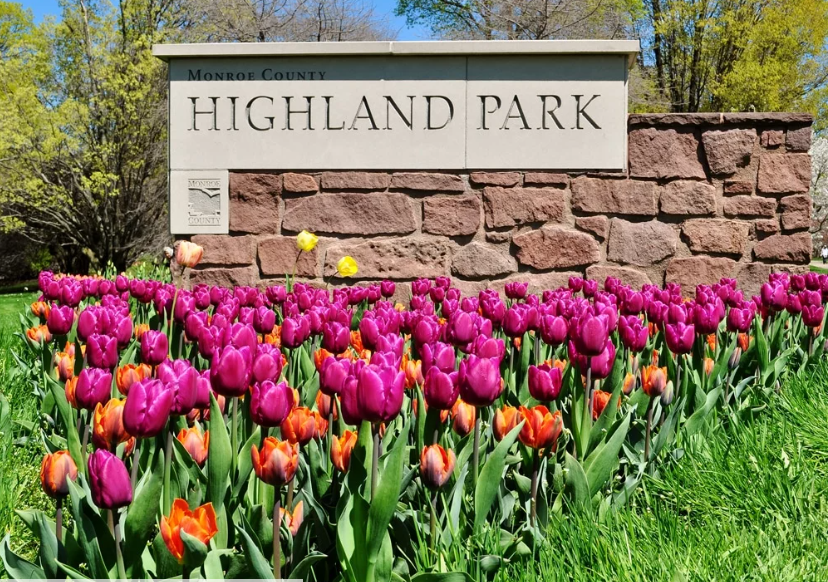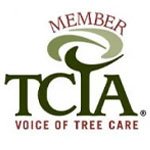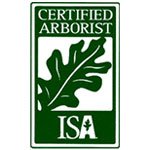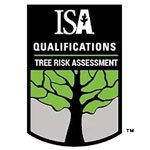Rochester, New York, is known for its rich history and strong connections to nature, and its trees. Since the 19th century, trees have played a central role in the city’s identity, both in terms of its physical landscape and its cultural fabric. Today, Rochester is proud to be recognized as a Tree City USA every year since 1981, by the Arbor Day Foundation. The city’s history of trees started long before that, and is deeply rooted in its history. When early settlers arrived in the area, they were met with dense forests. The land was covered with such a large amount of trees that some of the earliest roads in the area were built from the wood of those trees; even roads like Plank Road and East Henrietta Road were once wooden highways.
Rochester is the “Flour City”, so it is fitting that the first trees in Rochester for ornament were planted by the prominent flour miller, Hervey Ely in the 1830’s. Ely’s choice of sugar maples along Washington Street marked the beginning of a tradition that would become a hallmark of the city’s landscape. The maples were a nod to the city’s connection to its agricultural roots while also introducing an aesthetic beauty that would define the city for generations to come.
Street trees became a more organized feature of Rochester’s urban planning in the 1840’s as nursery men led the charge. Josiah W. Bissell, a local nurseryman, is credited with planting the first official street trees along East Avenue. Originally, horse chestnut trees were planted, but over time, they were replaced with majestic elm trees. Sadly, these trees, too, eventually had to be replaced, as Dutch elm disease made a noticeable impact on the city’s forests. But this early tradition of planting trees along city streets would continue to evolve, shaping the look and feel of Rochester.
One of the more notable figures in Rochester’s tree history is Henry Edward Hooker. At only twenty years old he purchased a tract of land on East Avenue and established the Hooker Brother Nurseries with his brother Josiah W. Bissell. He made significant contributions to the city’s urban landscape, including planting hybrid magnolias on Oxford Street in 1880. These trees, a cross between Chinese white and Japanese purple magnolias, are still admired for their vibrant, delicate blooms. His other notable contributions are Brighton Avenue with its graceful birches.
Another major player in Rochester’s tree story was George Ellwanger. Along with Patrick Barry, he founded the Mount Hope Nursery in 1840. This nursery was across the street from the Mount Hope Cemetery. By 1871 the nursery had grown to over 650 acres making it the largest nursery in the world. The nursery’s success helped shape the city’s horticultural legacy. Ellwanger and Barry donated 20 choice acres of their property to the City of Rochester to help form Highland Park and the Rochester Parks Commission, formed in 1888.Their efforts can still be seen throughout Rochester today, particularly in the grand European beeches they developed. These include the fern-leaved, copper, purple, and weeping beeches.
The park system in Rochester owes much of its development to the vision of Frederick Law Olmsted, the renowned landscape architect who also designed Central Park in New York City. During its first organizational meeting in 1888, the Rochester Parks Commission decided to invite the great American landscape architect, Frederick Law Olmsted, and his partner Calvin Vaux, to design a park system for the city. Olmsted’s parks, like Genesee Valley Park, Highland Park, Maplewood Park, and Seneca Park, have remained some of the city’s most beloved green spaces.
Olmsted believed that the common green space must always be equally accessible to all citizens, and was to be defended against private encroachment. This principle is now fundamental to the idea of a “public park”, but was not assumed as necessary then. Olmsted’s concept was to connect the parks to other areas of the city by means of a parkway system. Rochester, Louisville, Boston, and Buffalo are the only four cities with park systems designed solely by Frederick Law Olmsted, Sr.
In the years following Olmstead’s work, he continued to influence the trees around Rochester. In 1891 Highland Park superintendent Calvin Laney needed more help so he hired horticulturist John Dunbar to oversee plant collections at the park. Dunbar continued planting according to the plans by Frederick Law Olmsted. Dunbar quickly forged a relationship with another prominent Horticulturist Charles Sprauge Sargent of Arnold Arboretum in Boston, exchanging plant material and further enriching the city’s green spaces. Both designed by Olmstead to be features of a larger park system. For decades Dunbar and Arnold’s arboretum exchanged plant material. In May of 1898 the first Lilac Festival event attracted 3,000 visitors. The Mount Hope Nursery earned Rochester the title of “The Flower City” and the Lilac Festival maintains the heritage of that name. Olmstead’s influence also continued on through when landscape architect Bernard Slavin used knowledge gained from working with Olmsted to design Durand Eastman, evident in the variety of mature trees in the arboretum.
Even with Rochester having a rich history with the planting of trees and the donations of public park lands, there have been many challenges to keeping the city so beautiful. In 1896 the city’s Park Commission reports document an ongoing battle with Tussak moths (also known as tent caterpillars). In the 1950s, the individual streets lined with near monocultures helped to create favorable conditions for the spread of Dutch elm disease. An estimated 20,000 elm trees were lost in a 15 year period. During this time a progressive idea was implemented and a tree inventory was completed. The 1991 ice storm also caused major deforestation to the city’s urban forest. 14,000 street trees were removed in a 4 year period in the aftermath of the storm. Yet again another good new policy came from this damaging natural occurrence, the city developed a tree planting plan focused on planting a wider variety of tree species to improve resilience. More recently, the arrival of the emerald ash borer in 2011, and the wind storm of March 2017 have posed additional challenges to keeping the city green. Rochester’s Forestry Division continues to adapt and innovate to keeping the city’s trees healthy and vibrant.
Despite the challenges mother nature sometimes throws at Rochester’s Forestry Division, they have successfully navigated keeping the city’s urban forest alive and well. As of 2024, the city’s managed urban forest includes over 67,000 trees along city streets, in parks, and in cemeteries with 173 species. The diverse urban forest is not only beautiful but provides numerous benefits to the community, shading streets, improving air quality, and contributing to the overall well being of its residents. Rochester’s continued commitment to its trees is clear to both residents and visitors alike as they appreciate the value of all the city’s green spaces.
Rochester’s story with trees is a testament to the city’s resilience, creativity and deep rooted connection to nature. From its humble beginnings and through its ups and downs, the city has managed to keep its urban forest alive and growing, with new generations of trees continuing to tell the story of a city that values its history and looks forward to a greener future.









